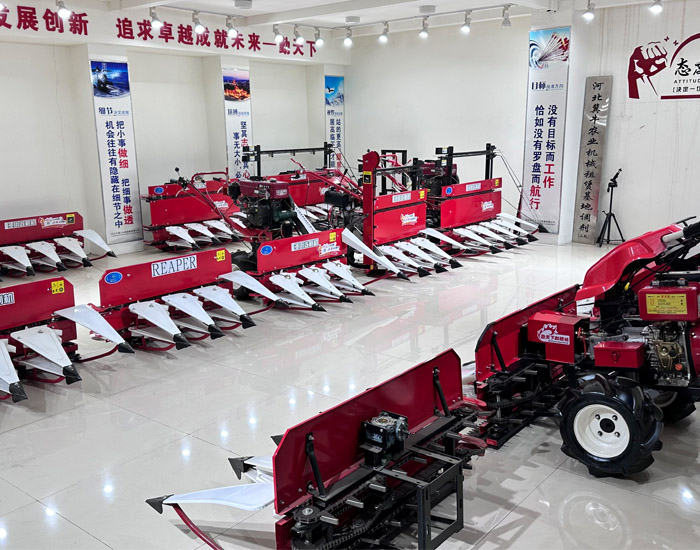rice reaper harvester
The Evolution and Impact of Rice Reaper Harvesters
Agriculture has always been a cornerstone of human civilization, and in regions where rice is a staple crop, the methods of cultivation and harvest have evolved significantly over time. Among the innovative technologies that have transformed rice harvesting is the rice reaper harvester. This machine has not only increased efficiency but has also reshaped the socio-economic landscape of farming communities.
Historically, rice harvesting was a labor-intensive process, heavily reliant on manual labor. Farmers would use sickles to cut down the rice stalks, which required considerable time and effort. This method, while traditional, posed several challenges, including the physical strain on workers, the risk of injury, and the time taken to harvest large fields. As populations grew and demand for rice increased, the limitations of manual harvesting became evident.
In the mid-20th century, mechanization began to make inroads into agriculture, and the advent of the rice reaper harvester marked a significant turning point. This machine is designed to efficiently cut and collect rice stalks, drastically reducing the time and labor required for harvesting. The rice reaper harvester typically features a series of blades that cut the rice plants at their base and convey the cut stalks to a collection area. This innovation allows farmers to cover larger areas in a shorter period, ultimately boosting productivity.
One of the chief advantages of utilizing rice reaper harvesters is the increase in efficiency. A single harvester can accomplish the work of dozens of workers in a fraction of the time. This efficiency not only helps farmers meet market demands but also allows for timely planting and harvesting cycles, which are critical for optimizing yields.
rice reaper harvester

Moreover, rice reaper harvesters contribute to the overall improvement of the quality of rice harvested. Manual harvesting can lead to damages, with rice grains falling off stalks or being left behind. The precision of a machine ensures that more of the crop is effectively gathered, reducing waste and improving the economic returns for farmers.
However, the introduction of rice reaper harvesters is not without challenges. The initial investment cost can be prohibitive for smallholder farmers, particularly in developing regions where access to credit and financing options is limited. Additionally, there is a need for training to ensure that operators can effectively use and maintain these machines. Without proper training, there is a risk of damage to the equipment and reduced efficiency in the harvesting process.
Furthermore, while mechanization has the potential to significantly enhance productivity, it also raises concerns regarding employment. With machines taking over tasks traditionally performed by human labor, there can be a reduction in job opportunities for farm workers. This shift may lead to socio-economic adjustments in communities heavily reliant on agricultural labor. It underscores the importance of balancing technological advancements with the needs of the workforce to ensure that the benefits of mechanization are widely shared.
In conclusion, the rice reaper harvester represents a crucial advancement in the agricultural sector, particularly in rice-producing regions. Its ability to enhance efficiency, improve quality, and increase productivity cannot be overstated. However, for a sustainable and inclusive agricultural future, it is imperative to address the associated challenges, including accessibility, training, and the socio-economic impacts on labor. As agriculture continues to adapt to modern demands, the rice reaper harvester will play a pivotal role in shaping the future of rice cultivation, ensuring that food security is maintained in an ever-changing world.
Latest news
-
When to Upgrade Your Old Forage HarvesterNewsJun.05,2025
-
One Forage Harvester for All Your NeedsNewsJun.05,2025
-
Mastering the Grass Reaper MachineNewsJun.05,2025
-
How Small Farms Make Full Use of Wheat ReaperNewsJun.05,2025
-
Harvesting Wheat the Easy Way: Use a Mini Tractor ReaperNewsJun.05,2025
-
Growing Demand for the Mini Tractor Reaper in AsiaNewsJun.05,2025







